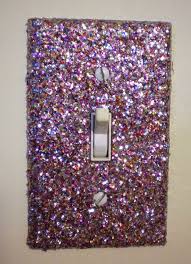Water Marbling Technique: Upscale Your Switch Covers With Nail Polish!

Switchplates: they're the panels that cover electrical components in your walls, which make it possible to turn lights on and off. Property owners typically get the white plastic variant because it's affordable, durable, and does the job well. Sometimes, they choose a night light outlet to spruce it up. Otherwise, the switchplate looks plain and ordinary, so it doesn't appeal much to people who have an eye for aesthetics.
The good news is, there are many genius ways to upscale an average switch plate, and today, you're learning one of them. Get your art-senal ready and keep your creative juices flowing.
Getting Your Art Materials Ready
This is the best technique to make marbling
patterns similar to natural stone. You'll need a few things to create this
masterpiece:
- Toothpicks
- A big bowl filled with room temperature water
- 2-3 colors of nail polish that look great together
- A used
cloth and nail polish remover for cleaning
Look for good color palette references on the internet if you're not sure what to get. Also, don't forget to wear gloves, as it can be messy and hard to clean.
Creating Marbling Patterns on Water
The first thing you'll do is drip your nail polishes in the water one by one. The sequence is up to you. They'll look good together anyway if you've chosen the right colors. You can place them on random spots or make the drops fall inside each other.
You can also move the patterns around with the tip of a toothpick to create
different marbling effects. Depending on how you drag them across the water,
they can look like swirls, peacock feathers, or even spider webs. The drops of
nail polish will stay on the surface, but be quick since they dry pretty fast.
Transferring the Design to Your Switch Plate
After you're satisfied with your composition, get your switch plate and dip it in with its front side facing the water. Then, take it out carefully while doing a swirling motion with your hand like you're making a circle. This way, the pigments in the bowl float away and won't stick to your panel or ruin your artwork. Lay it on a paper towel, let it dry, and clean the messy parts with a used cloth and a nail polish remover.
Using this technique becomes easy with practice, so don't be discouraged if you don't get it right the first time. Now, you'll have exquisite switchplate covers that are distinguishable to the discerning eye without the variation needing to be an outlet night light.
Post Your Ad Here
Comments